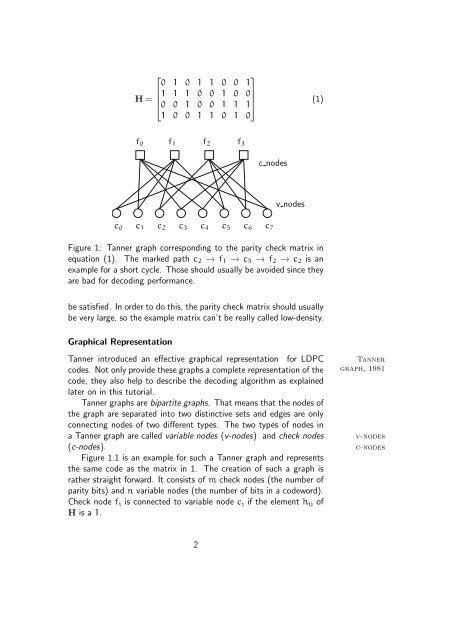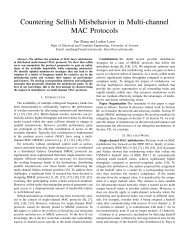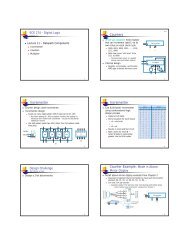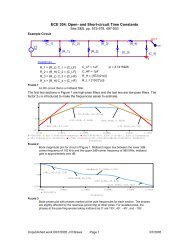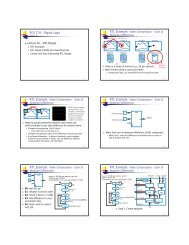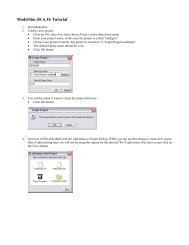You also want an ePaper? Increase the reach of your titles
YUMPU automatically turns print PDFs into web optimized ePapers that Google loves.
⎡<br />
0<br />
⎢<br />
H = ⎢1<br />
⎣0<br />
1<br />
1<br />
0<br />
0<br />
1<br />
1<br />
1<br />
0<br />
0<br />
1<br />
0<br />
0<br />
0<br />
1<br />
1<br />
0<br />
0<br />
1<br />
⎤<br />
1<br />
0 ⎥<br />
1⎦<br />
1 0 0 1 1 0 1 0<br />
f0<br />
f1<br />
c0 c1 c2 c3 c4 c5 c6 c7<br />
f2<br />
f3<br />
c nodes<br />
v nodes<br />
Figure 1: Tanner graph corresponding to the parity check matrix in<br />
equation (1). The marked path c2 → f1 → c5 → f2 → c2 is an<br />
example for a short cycle. Those should usually be avoided since they<br />
are bad for decoding performance.<br />
be satisfied. In order to do this, the parity check matrix should usually<br />
be very large, so the example matrix can’t be really called low-density.<br />
Graphical Representation<br />
Tanner introduced an effective graphical representation for <strong>LDPC</strong> Tanner<br />
graph, 1981<br />
codes. Not only provide these graphs a complete representation of the<br />
code, they also help to describe the decoding algorithm as explained<br />
later on in this tutorial.<br />
Tanner graphs are bipartite graphs. That means that the nodes of<br />
the graph are separated into two distinctive sets and edges are only<br />
connecting nodes of two different types. The two types of nodes in<br />
a Tanner graph are called variable nodes (v-nodes) and check nodes v-nodes<br />
(c-nodes). c-nodes<br />
Figure 1.1 is an example for such a Tanner graph and represents<br />
the same code as the matrix in 1. The creation of such a graph is<br />
rather straight forward. It consists of m check nodes (the number of<br />
parity bits) and n variable nodes (the number of bits in a codeword).<br />
Check node fi is connected to variable node cj if the element hij of<br />
H is a 1.<br />
2<br />
(1)


